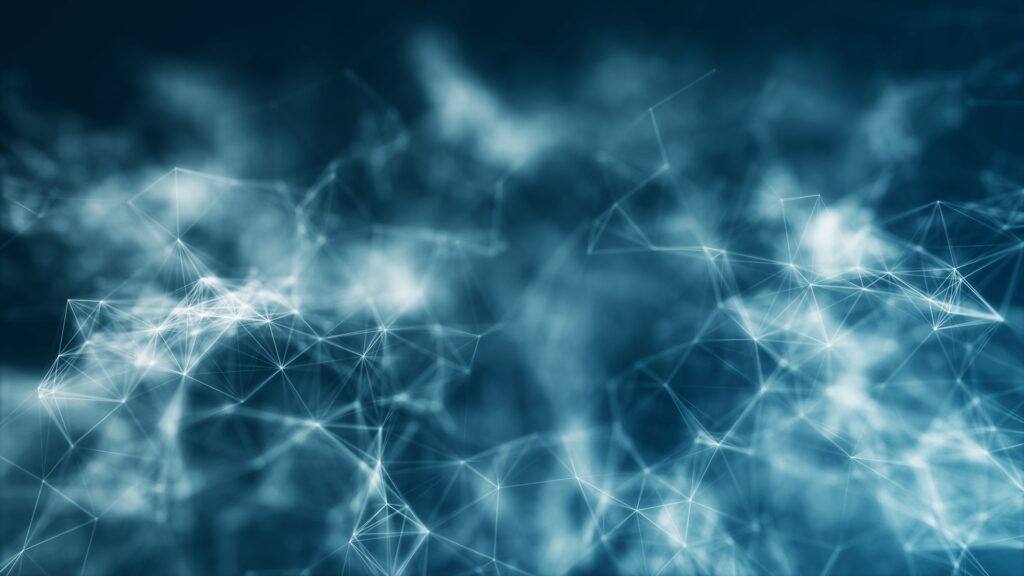
Mirror neurons: The most powerful learning tool
Mirror neurons. Imitation has always been a powerful learning tool. The human brain is enabled with different mechanisms that allow us to imitate actions. Babies are capable of reproducing facial expressions, and as adults, we imitate basic behavior. Laughter can be spread, we can cry while watching a sad movie… It seems like we have the capacity to feel what others feel, empathize with them and understand their feelings. What happens in the brain for this to happen? The answer is mirror neurons. In this article, we will explain everything you need to know about mirror neurons. What are they? How do they intervene in education and empathy? Why is emotion contagious?

What are Mirror Neurons?
In humans and primate species there are neurons called Mirror Neurons. These brain cells activate when we see someone doing something. For example, when a chimpanzee sees its mother opening a nut with a rock and then tries to imitate her with another nut. Mirror neurons are related with empathic, social and imitations behavior. They are a fundamental tool for learning.
“We are social beings. Our survival depends on our understanding the actions, intentions, and emotions of others. Mirror neurons allow us to understand other people’s mind, not only through conceptual reasoning but through imitation. Feeling, not thinking.”- G.Rizzolatti.
In the 90’s a group of neuroscientists, directed by Giacomo Rizzolatti from the University of Parma (Italy), discovered something surprising. A hundred group of neurons in the brain in primates were activated not only when the monkey was doing something but also when the monkey saw another one doing that same action.
Mirror neurons can be defined as a group of neurons that activate when we perform an action or when we see an action being performed.
Mirror neurons are essential for imitation which is key in the learning process. From birth these group of neurons are active and it allows us to learn to eat, dress, speak… Mirror neurons are also important in planning our actions as well as understanding intentions behind actions.
In the next video, Ramachandran a neuroscientist, explains what are mirror neurons and why they are important.
Mirror Neurons and Education
Mirror neurons allow us to learn through imitation. They enable us to reflect body language, facial expressions, and emotions. Mirror neurons play an essential part in our social life. They are key for the child development, as well as relationships and education.
Humans are social beings programmed to learn from others. We all reach our goals working as a group than individually. Seeing a parent, professor or student show a cognitive skill or any other skill, gives us a tangible experience rather than learning from explanation.
How do mirror neurons intervene in our daily lives?
- Mirror neurons are responsible for yawning when we see someone else yawn.
- These neurons also act when we see someone sad or crying and in turn feel sad.
- The same thing happens with smiling or laughing. The way laughter can be contagious.
- Studies suggest that there is an activation of the anterior insula when we see someone expressing disgust.
- Another study shows that the somatosensory cortex is activated when we see someone touching another person the same way it activates when we are the ones being touched.
8 tips: How do mirror neurons influence education?
Thanks to mirror neurons the emotions we portray have a direct influence on others. This is why teachers have to make the effort to control their emotions, avoid teacher burnout, in order to use mirror neurons as an asset.
- Show happiness and optimism and that way you will transmit that to your students and children.
- Control and avoid negative emotions. We all have bad days but teachers have to be sure this doesn’t reflect on the children. However, the tricky part is that this doesn’t mean children should repress these emotions. As a teacher be sure to detect what emotion the child is feeling and help them learn to identify and manage them accordingly.
- Use visual signs and imitation any chance you get. Make examples practical with physical demonstrations so that children can imitate you.
- Encourage group interactions. This will maximize the use of mirror neurons and therefore the child’s social relationships and empathy.
- Use imitation in any activity that you want the children to learn (washing teeth, cleaning up after themselves…)
- Run from violence. Children learn what they see. If a child is educated in a hostile environment, his mirror neurons will activate and he might repeat these violent behaviors.
- Teach children the importance of how we listen, particularly body language. That way when someone has to share something or needs help the mirror neurons will activate and empathy will be reinforced.
- Teach children about emotional intelligence so that they can be able to identify their own and other people’s emotions.
Mirror Neurons and Emotional Contagion
Do you feel happy when people around you are happy? Do you get sad or depressed around negative and pessimistic people? This is due to the emotional contagion produced by the mirror neurons.
Emotional Contagion is a process through which a person or group influence the emotions and emotional behavior of another person or group. This can be done through emotional induction conscious or unconscious.
When people communicate they have the tendency to imitate gestures and facial expressions and in many cases feel what others are feeling. It has been proven the high impact emotional contagion has in our personal and work relationships. We are still not conscious of the influential ability we have in other people’s emotional state and in turn other people on our own emotional state.
Mirror neurons allow us to literally feel what others are feeling and “live” their emotions. Mirror neurons are based on empathy.
Empathy is the ability to share someone else’s feelings or experiences by imagining what it would be like to be in that person’s situation.
This is proof that we are social beings. Empathy has been essential to our species survival and shows how without attachments and protection we wouldn’t have survived.
How can we take advantage of emotional contagion?
The fact that we can interconnect to each other and understand each other’s feelings can work to our advantage.
- Happiness is more contagious than sadness, so try to surround yourself with happy people. However, don’t avoid people who are sad, we all need support sometimes and giving them love might help them recover faster.
- Imitate happy and positive people, do what they do. Practice sports and smile more (even if you don’t feel like it, you will later feel better). Keep a healthy self-esteem and stop thinking negatively.
- Think before acting or saying anything, especially if its negative. Try to say it politely, educated and as calmly as possible since your emotional state can be contagious.
Check out how laughter can be contagious with this video.
Mirror Neurons and Culture
Does culture influence our brain? The answer seems to be yes. According to an investigation from the University of California, mirror neurons respond differently if the person in front of us shares our same culture or not.
Researchers used two actors, one American and another Nicaraguan to show a group of American participants a series of gestures (some American, others Nicaraguan and others without cultural meaning).
With Transcranial magnetic stimulation (TMS) they investigated mirror neuron activities. They found that participants showed more activity when they saw the American do the gestures in comparison to the Nicaraguan. When the Nicaraguan showed American gestures to the group, the mirror neurons decreased their activity drastically.
It’s possible to conclude that mirror neurons are influenced by culture and in turn have an influence on our behavior. The results from this study show us that we are more prepared to understand and empathize with members of our own culture and ethnicity than those who are not. This also explains why we connect faster and easier with members of our own culture.
Mirror Neurons, empathy, and psychopathy
Psychopathy is a personality disorder distinguished by a superficial charm, pathological lies, and low empathy.
It’s common for psychopaths to lead a criminal life, however, not all become, serial killers or murderers. Some can actually lead a normal life.
If these psychopaths are not capable of empathizing, does that mean their mirror neurons are not working? A recent study answered this question.
Researchers observed the brain activity of two groups (18 psychopaths and 26 healthy people) while they watched short videos. The videos showed images of hands touching, gently, painfully, socially, rejecting each other and neutrally. They were instructed to watch the video and then to try to feel what the people were feeling. The next part of the study the participants were hit with a ruler to register their pain area in the brain.
Scientists found that only when psychopaths were asked to feel something did they actually feel something, mirror neurons even activated the same way as in the other group. However, when no instruction was given, the psychopath’s group showed less activation of the mirror neurons and pain receptors of the brain.
It’s not that psychopaths don’t have empathy, it’s that it’s a switch that can be activated and deactivated, and by default, it is always deactivated.
Mirror Neurons and Autism
Symptoms of autism include a delay in language and strained emotional recognition. They are not capable of perceiving different emotions, including their own.
Scientists, therefore, studied the mirror neurons in people with autism to check if they were “broken”. They found that the system has a developmental delay, where the activity is slower, weaker and less activated than in others. Nonetheless, the activity increases with age and by age 30 it becomes normal and then unusually elevated.
Other studies have discovered that not all people with autism have a delay in these neurons. They can be activated normally by familiar faces.
Hope you found this article interesting. Please leave a comment below!
References
Molnar-Szakacs, I., Wu, A. D., Robles, F. J., & Iacoboni, M. (2007). Do you see what I mean? Corticospinal excitability during observation of culture-specific gestures. PLoS One, 2(7), e626.
Meffert, H., Gazzola, V., den Boer, J. A., Bartels, A. A., & Keysers, C. (2013). Reduced spontaneous but relatively normal deliberate vicarious representations in psychopathy. Brain, 136(8), 2550-2562.
This article is originally in Spanish written by Andrea García Cerdán, translated by Alejandra Salazar.














